Holding a master’s degree in biochemistry, Ba Thi Cham was the first person in the Institute of Chemistry to build a laboratory of bio-active substances to test the bio-active substances of medicinal herbs.
The building of the laboratory followed Cham’s participation in a cooperation project between the Institute of Chemistry and Belgium’s Tibotec Pharmaceuticals in the antibiotic, anti-virus and anti-cancer agents of Vietnamese plants.
In 2005, Cham was sent to Belgium, Japan, South Korea and Italy to study the testing of bio-active substances and nano technology. There, she had the opportunity to access advanced laboratories which receive natural active substances and synthetized chemical substances from all over the world.
“This work helps me access a bank of information on the effects of Vietnamese plants, including those which have not been included in special-use dictionaries,” Cham said.
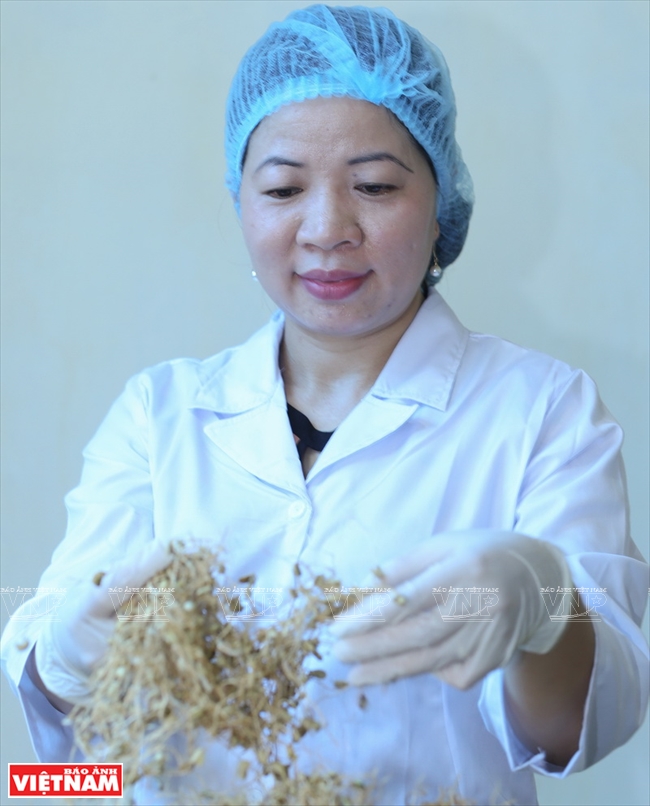
Ba Thi Cham has received the Creative Women’s Award.
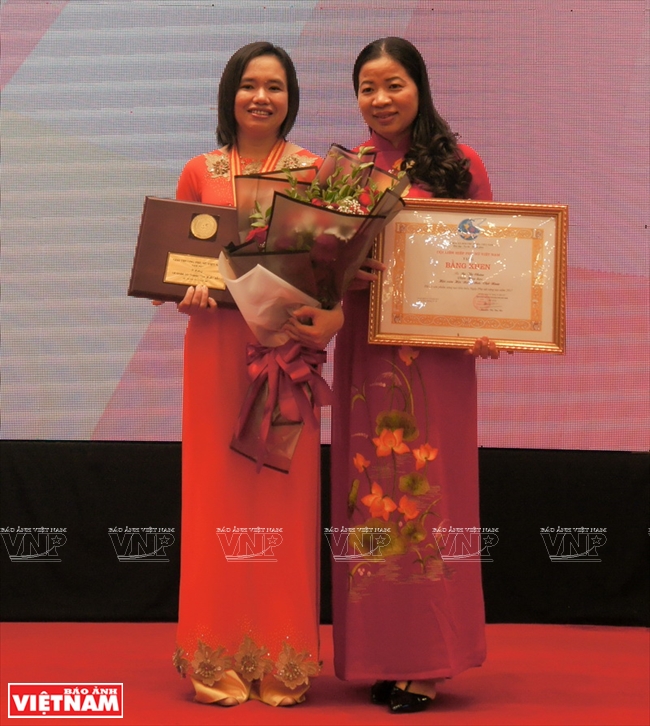
Cham (right) at the 2017 Creative Women’s Award ceremony.
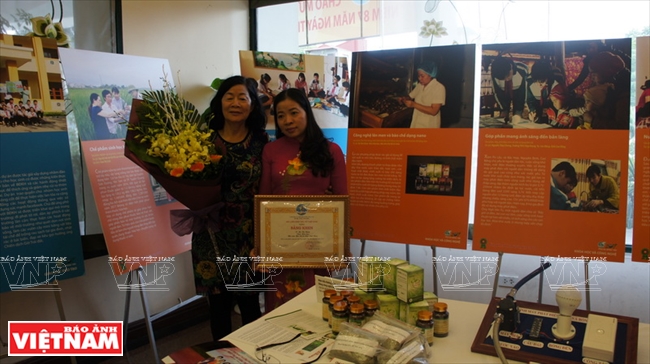
At her pavilion in the exhibition for creative women in 2017.
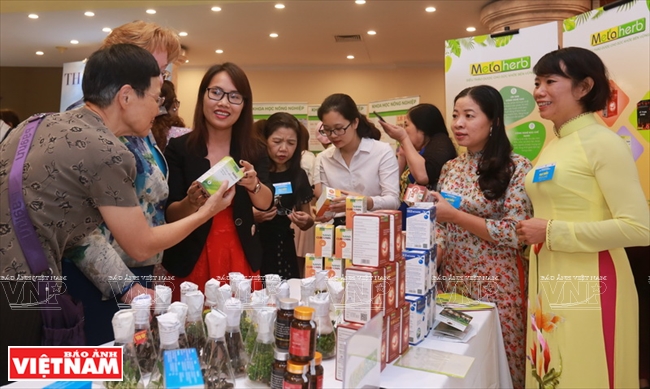
Cham (second right) introduces her products at the exhibition for creative women in 2018.

Cham attends the 2018 meeting of the Asia and Pacific Nations Network of female scientists.
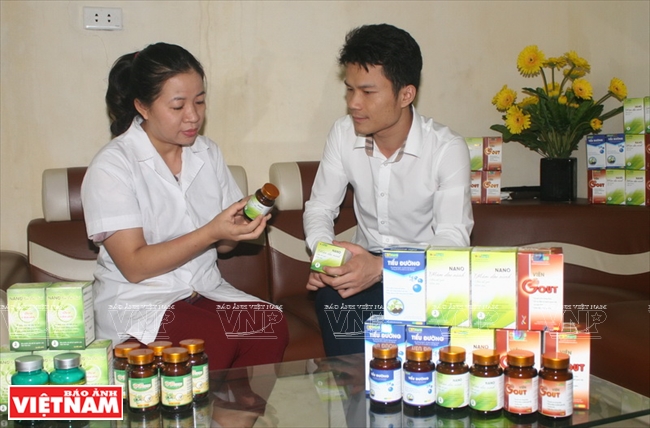
Cham’s project to produce functional foods from herbs with nano technology
has been successfully applied to mass production of herb-based products. |
Apart from this information source, Cham studied active substances of Vietnamese herbs from domestic and foreign documents and studies, as well as folk experiences. She now can identify exactly which substance or group of substances creates the main effect of each plant as well as their physiochemical properties to extract them.
According to Cham, it is important to identify the main effect of a plant and which one comes from which active substance. She pointed out that many traditional remedies include herbs which have the same effect. “This is not only a waste but may also pose risks for patients because the plants may contain harmful substances,” Cham said.
“Once I know exactly the effect of a particular substance in a plant, I will extract only this substance and prepare it in a form which can be easily absorbed, used and preserved,” Cham said, adding this helps largely reduce the ingredients in a remedy.
The world’s current trend to turn to natural substances in treating diseases offers an opportunity for traditional medicine to develop, according to Cham. “The most important thing is to find out the preparation method which can minimize side effects of the herbs to increase their curative effects,” she said.
Through seminars and meetings with foreign specialists, Cham has learnt about nano technology, and found that this technology can address limitations of traditional herbs.
“The nano technology allows the reduction of the size of active substances to a nanometer (equal to one billionth of a meter). When introduced into the human body in this size, the substances can be absorbed to the utmost, thus their effects are increased,” Cham explained.
Cham started her project to make herb-based functional foods with nano technology.
“In this project, active substances are first extracted from herbs, then fermented to increase their effects, and finally nanoized. This method helps raise the pharmaceutical effects of an herb while saving medicinal materials and allowing easy preservation, transportation and use,” Cham said.
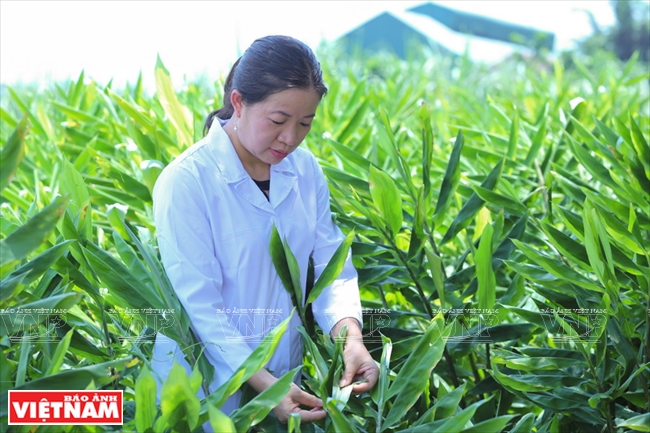
Cham visits herb-growing areas to directly monitor the harvesting and preliminary processing
to ensure that the herbs are not infected with mold.
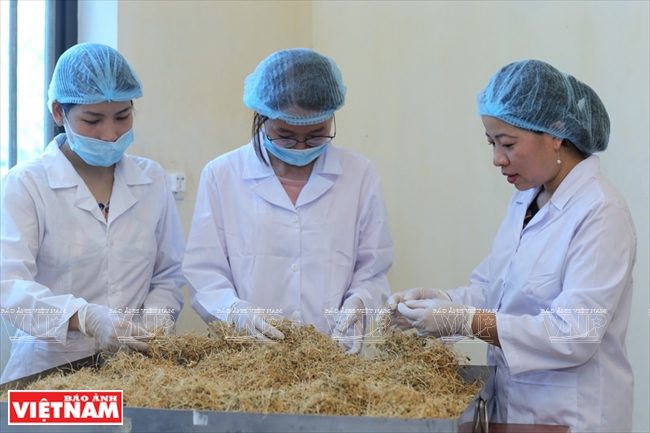
She pays special attention to the origin of the herbs.
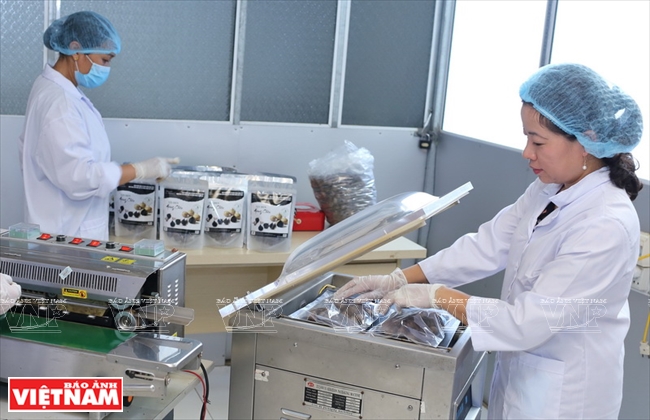
At a black garlic workshop.
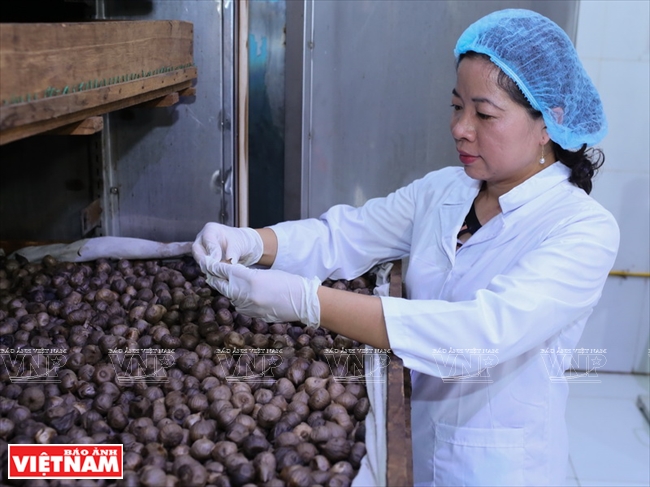
Black garlic helps improve the immunization system.

Nano technology helps raise the effect of medicinal herbs and saves the input materials.
|
Ba Thi Cham has produced nearly 20 product lines for health improvement, seven of which have been transferred to enterprises.
|
Functional foods produced under Cham’s project include three groups. The first is for improving the immunization system which is important to prevent diseases. Of this group, nanocurcumin and black garlic are now popular in the market.
The next group includes those supporting the treatment of metabolism-related diseases such as diabetes, gout and lipid metabolism disorders.
The last group is for improving hormone health, which includes soybean germ products.
Cham’s desire is to tap Vietnam’s rich treasure of medicinal herbs to increase their value while reducing the import of foreign drugs so that local people can benefit from domestic pharmaceutical products both in quality and price./.